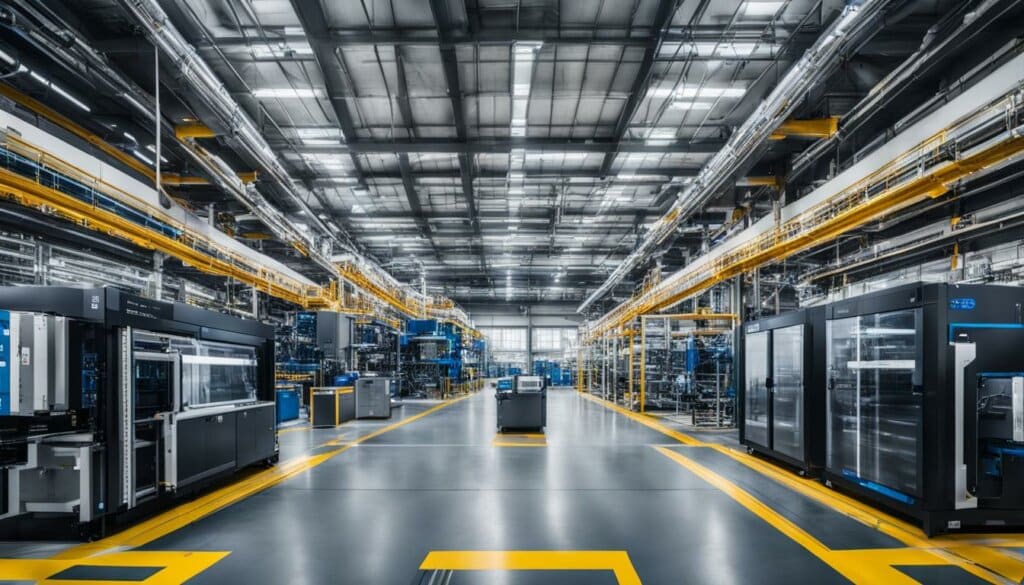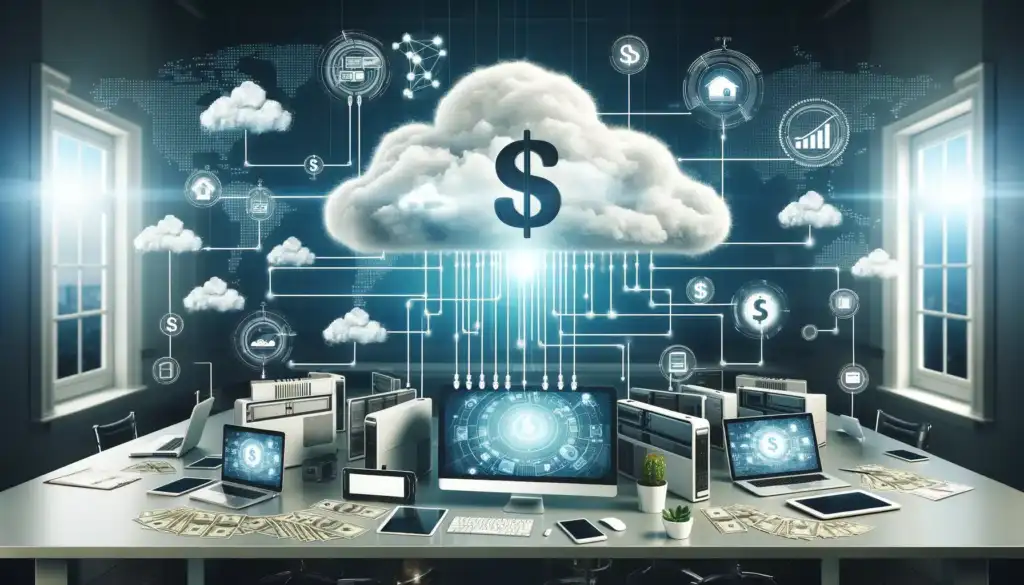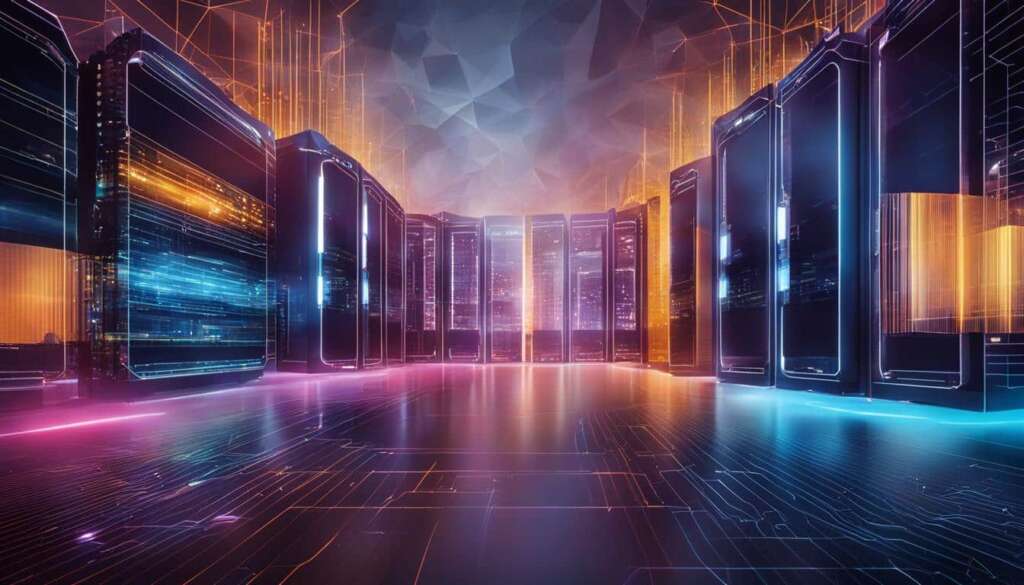Table of Contents
Welcome to our article on edge computing, a groundbreaking technology that is revolutionizing data processing and management. Unlike traditional cloud computing models, edge computing brings data processing and storage closer to the source, reducing latency and enhancing response times. In this section, we will delve into the advantages and applications of edge computing technology.
Edge computing offers numerous benefits for businesses and industries. By processing data closer to the point of generation, it significantly reduces latency, ensuring real-time applications such as online gaming and video conferencing perform flawlessly. Additionally, edge computing improves reliability by leveraging geographically distributed servers, and optimizes bandwidth usage by reducing the amount of data transmitted over networks.
The applications of edge computing are diverse and impactful. In healthcare, wearable devices equipped with edge computing enable real-time monitoring of critical health data. Retailers utilize edge computing for analyzing customer behavior and managing inventory efficiently. In building smart cities, edge computing plays a vital role in traffic control, environmental monitoring, and public safety. Moreover, edge computing is indispensable for the Industrial Internet of Things (IIoT), enabling predictive maintenance and increased productivity in manufacturing.
While edge computing offers substantial advantages, it also comes with its own set of challenges and considerations. Security is a top concern, given the distributed nature of edge computing. Rigorous measures must be implemented to protect data and devices. Managing edge devices efficiently poses another challenge, necessitating robust tools for provisioning and repair. Implementing an edge computing system can be costly, particularly for small businesses. However, the benefits in terms of productivity gains and enhanced user experiences often outweigh the costs.
In conclusion, edge computing is a game-changer in data processing and management. Its benefits range from reduced latency and improved reliability to optimized bandwidth usage. With applications across healthcare, retail, smart cities, and more, the demand for edge computing solutions continues to grow. Despite challenges, the future of edge computing looks promising, as advancements in real-time applications and the integration of 5G technology drive innovation. As more companies adopt edge computing solutions, we can expect enhanced user experiences and continued growth in the coming years.
Advantages of Edge Computing
Edge computing offers several benefits compared to traditional cloud computing models. These advantages make it a compelling choice for industries requiring real-time data processing and low latency.
First and foremost, edge computing significantly reduces latency by processing data closer to the source. This is particularly critical for applications that demand immediate responses, such as online gaming and video conferencing. By eliminating the need to transmit data to a centralized cloud server and back, edge computing minimizes delays and ensures smooth, uninterrupted user experiences.
Another advantage of edge computing is the improvement in reliability. By utilizing geographically distributed servers, edge computing architecture creates a network of interconnected nodes that can continue to operate even if some nodes fail. This decentralized approach enhances resilience and guarantees uninterrupted functionality, even in the face of network disruptions or server failures.
Furthermore, edge computing optimizes bandwidth usage by reducing the volume of data transmitted over the network. Instead of sending all data to a remote cloud server for processing, edge devices locally process and filter the data. Only the relevant and condensed information is then sent to the cloud for further analysis or storage. This approach reduces network congestion and conserves bandwidth, resulting in more efficient and cost-effective data transmission.
| Benefits | Description |
|---|---|
| Reduced Latency | Processing data closer to the source for real-time applications. |
| Improved Reliability | Geographically distributed servers ensure uninterrupted functionality. |
| Bandwidth Optimization | Reducing data volume transmitted over the network. |
These advantages make edge computing an ideal solution for a wide range of applications, including autonomous vehicles, smart cities, and industrial automation. The ability to process data at the edge brings unprecedented speed, reliability, and efficiency to industries that heavily rely on real-time insights and immediate actions.
Next, we will explore the various applications of edge computing, highlighting its transformative impact across diverse sectors.
Applications of Edge Computing
Edge computing technology offers a wide range of applications across various industries, revolutionizing data processing and enabling real-time decision-making. Let’s explore some examples of edge computing in action:
In Healthcare
Wearable devices equipped with edge processing capabilities play a critical role in monitoring real-time healthcare data. These devices collect and analyze vital signs, allowing for timely intervention and remote patient monitoring. Edge computing ensures that healthcare professionals have access to accurate and up-to-date information, facilitating efficient and proactive patient care.

In Retail
Retailers utilize edge computing to gain valuable insights into customer behavior and enhance inventory management. By capturing and processing data at the edge, retailers can analyze in-store footfall patterns, customer preferences, and buying habits. This enables them to personalize marketing strategies, optimize stock levels, and deliver a seamless customer experience.
In Building Smart Cities
Edge computing plays a vital role in the development of smart cities by enabling efficient systems for traffic control, environmental monitoring, and public safety. Edge-powered sensors and devices collect and process real-time data, allowing for faster response times and better decision-making in critical areas such as emergency services, energy management, and waste management.
In the Industrial Internet of Things (IIoT)
The Industrial Internet of Things (IIoT) relies on edge computing for predictive maintenance and enhanced productivity in manufacturing. By analyzing data from sensors embedded throughout the production line, edge devices can detect anomalies, predict equipment failures, and optimize workflows. This results in reduced downtime, improved efficiency, and cost savings.
These are just a few examples of how edge computing is transforming industries and driving innovation. Companies are increasingly realizing the potential of edge computing and partnering with edge computing companies to harness its power. As edge computing continues to evolve, we can expect even more remarkable applications and advancements in the future.
Challenges and Considerations
While edge computing offers numerous benefits, it also presents challenges. One of the key concerns is security. Due to the distributed nature of edge computing, stringent measures must be taken to protect the data and devices involved. Implementing robust security protocols and encryption mechanisms is essential to safeguard sensitive information from potential threats.
Maintaining and managing edge devices can also be challenging. With edge computing, a large number of devices are involved, each performing specific tasks. This requires efficient tools for provisioning, monitoring, and repair to ensure optimal performance and minimize downtime.
Another consideration is the cost associated with implementing an edge computing system. The infrastructure required for edge computing can be expensive, especially for small businesses with limited resources. However, the productivity gains and user satisfaction that come with reduced latency and improved response times often justify the investment.
It is important for businesses to carefully evaluate their specific needs and weigh the pros and cons of edge computing versus cloud computing. While edge computing offers advantages in terms of reduced latency and enhanced reliability, cloud computing may be a more cost-effective solution for certain applications that do not require real-time processing.
To help you understand the contrasts between edge computing and cloud computing, refer to the table below:
| Edge Computing | Cloud Computing |
|---|---|
| Processing closer to the source | Centralized data processing |
| Real-time processing | Delayed response times |
| Lower latency | Higher latency |
| Distributed architecture | Centralized architecture |
| Optimized bandwidth usage | High data transmission |
Conclusion
Edge computing is revolutionizing the world of data processing and management. With its ability to reduce latency, improve reliability, and optimize bandwidth usage, edge computing technology offers a range of benefits for various industries. From healthcare to retail and smart cities, edge computing solutions are transforming the way businesses operate.
While there are challenges to overcome, such as security and cost, the future of edge computing looks promising. The increasing demand for real-time applications and the integration of 5G technology are driving the adoption of edge computing solutions. As more companies embrace this technology, we can anticipate greater innovation and enhanced user experiences.
With edge computing at the forefront, businesses can process and analyze data closer to the source, leading to faster response times and improved decision-making. This technology empowers industries to harness the power of data and unlock new possibilities. As the edge computing landscape continues to evolve, it is clear that edge computing is the future of data processing and management.
FAQ
What is edge computing?
Edge computing is a technology that enables data processing and storage to take place closer to where data is generated, reducing latency and enhancing response times.
How does edge computing differ from cloud computing?
Edge computing processes data closer to the source, whereas cloud computing relies on centralized servers. This reduces latency and improves real-time application responsiveness.
What are the benefits of edge computing?
Edge computing offers reduced latency, improved reliability, and optimized bandwidth usage. It is crucial for real-time applications, enhances user experiences, and enables efficient data processing and management.
What are some applications of edge computing?
Edge computing is used in healthcare for real-time data monitoring, retail for customer behavior analysis, smart cities for traffic control and public safety, and the Industrial Internet of Things (IIoT) for predictive maintenance and increased productivity in manufacturing.
What are the challenges and considerations of implementing edge computing?
Challenges include ensuring the security of distributed edge computing systems, managing and maintaining edge devices, and the initial cost of implementation, especially for small businesses. However, the productivity gains and improved user satisfaction often outweigh these challenges.













